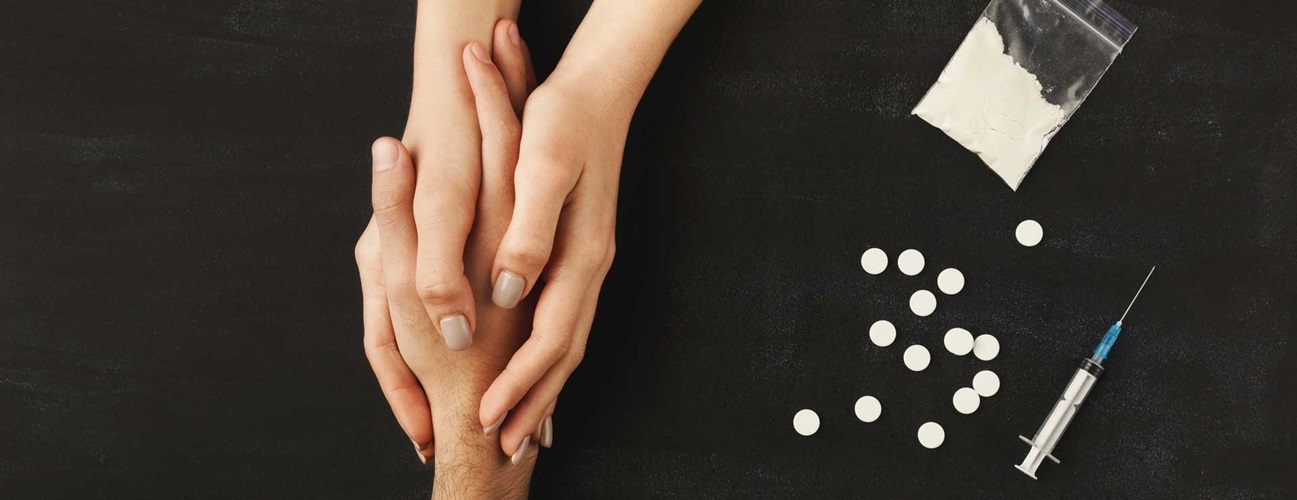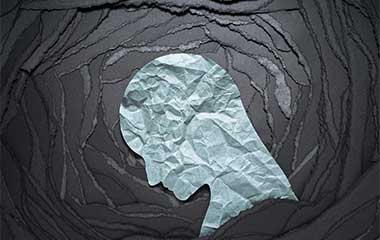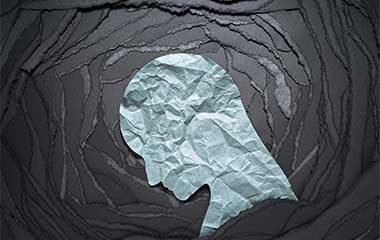Opioid Use Disorder
Opioid use disorder (OUD) is a complex illness characterized by compulsive use of opioid drugs even when the person wants to stop, or when using the drugs negatively affects the person’s physical and emotional well-being.
Though opioids can be prescribed by a doctor to treat pain, use of legally prescribed or illegal opioid medications may lead to an opioid use disorder. OUD is a public health crisis in the United States. From 1999 to 2020, more than 800,000 Americans died from drug overdoses. Increasing rates of drug addiction have contributed to recent decreases in U.S. life expectancy.
What You Need to Know
- Opioid addiction is a serious medical condition.
- Though the cause of OUD is not known, people may take opioids in an unhealthy way to achieve euphoria or to prevent withdrawal symptoms.
- Signs and symptoms of opioid use disorder include craving, risky use and withdrawal symptoms if the opioid is discontinued. If not treated, opioid use disorder can lead to overdose and death.
- Treatment, including drugs that can ease craving and help people discontinue opioid use, can help manage opioid use disorder.
Is opioid addiction a disease?
Opioid addiction is a type of substance use disorder. Though its cause is not yet fully understood, contributing factors may include how opioids affect an individual’s brain as well as family history and environmental and lifestyle factors. Like other diseases, opioid use disorder has specific symptoms and a pattern of progression (it tends to get worse over time), and treatments may help bring it under control.
Approaching substance use disorder as a disease is useful in planning effective treatment and reducing the stigma associated with addiction.
What causes addiction to opioids?
It is not yet known why some people become addicted to opioids and others do not. Typically, opioids produce pain relief and, for some people, euphoria ― a sense of heightened well-being. Experiencing euphoria after taking opioids may be a warning sign of vulnerability to opioid addiction. This euphoria can even occur in people using opioids as prescribed by their doctor.
Early in the process of opioid use disorder, people may take an opioid drug because of the pleasurable effect. Over time, the pleasant sensations diminish. A person may take opioids more frequently or at higher doses to restore the euphoria or, as the condition progresses, to avoid withdrawal symptoms.
Taking an opioid regularly increases the risk of becoming addicted. The time it takes to become physically dependent varies from person to person, but it is usually a couple of weeks. Taking an opioid for a day or two is not a problem for most people, but some studies show that even the first dose can have physiological effects that can make someone vulnerable to opioid use disorder.
Symptoms of Opioid Use Disorder
OUD is characterized by symptoms such as the following.
Physical dependence: This is a physiological change that occurs when using a substance. When the person stops taking the drug, they experience withdrawal symptoms such as cravings and sweating.
It is important to understand that a person can be physically dependent on opioids without unhealthy use. For example, a patient with cancer who has chronic pain may be physically dependent on opioids but not addicted to them.
Increasingly heavy, frequent, unhealthy or risky use: The person continues to use an opioid even though it causes problems with health, safety, financial security or personal relationships. A person with an opioid use disorder is unable to control the use of opioids, and behaviors associated with getting and using opioids increasingly interfere with daily life.
Cravings: These are overwhelming physical and emotional urges to take the drug, despite an understanding of potential consequences to well-being.
Other signs of an opioid use disorder: Someone struggling with an opioid use disorder may not show signs right away. Over time, there may be some signals that the person needs help, such as:
- Drowsiness
- Changes in sleep habits
- Weight loss
- Frequent flu-like symptoms
- Decreased libido
- Lack of hygiene
- Changes in exercise habits
- Isolation from family members or friends
- Stealing from family members, friends or businesses
- New financial difficulties
Even when suffering from a substance use disorder, a person may deny that the problem is serious and resist efforts to help for a long time. When ready and willing to start a recovery process, it is important for the person to have access to resources and to start treatment as quickly as possible.
Preventing Opioid Use Disorder
What should you do if your doctor prescribes an opioid drug for you? To lessen the chance of developing a substance use disorder, follow your doctor’s orders carefully, making sure to only take the medication as prescribed. If you are going to have a medical procedure, you should have a conversation with your physician beforehand about pain control.
Your questions for the physician may include:
- What is your strategy for pain control?
- Is this number of pills right for me?
- What options do I have other than taking an opioid to help control my pain?
Opioid Use Disorder Treatment
Opioid use disorder is a complex disease, and treatment works best when tailored to the individual. There is not a single approach that works well for everyone, and a person may try several therapies before finding the ones that support lasting recovery.
Treatment for opioid use disorder is available from health care professionals and may be provided on an outpatient basis or through a residential program such as a rehabilitation center (rehab). Treatment in any of these settings may include use of medications such as methadone, buprenorphine or naltrexone, paired with support programs that can help people recover.
Hospital treatment is rare for opioid use disorder alone. People with substance use disorders may go to hospital emergency rooms because they are in crisis due to physical or emotional distress. Most hospitals provide an evaluation and assess the patient’s primary need, and then connect the patient to treatment. The hospital may admit someone who also has a significant medical problem in addition to the opioid use disorder.
Opioid overdose treatment with naloxone can be used in an emergency situation when a person has taken an overdose of opioid drugs and has stopped breathing or is in danger of stopping breathing. Naloxone flushes the narcotic out of the brain’s receptors and can reverse the overdose, but it does not address the underlying opioid use disorder as addiction treatment would.
Opioid Withdrawal Treatment (Detoxification)
The first part of treatment is addressing withdrawal ― helping the person rid the body of the opioid. When a person with a physical dependence on opioids stops taking them, they experience withdrawal symptoms within six to 24 hours. The amount of time depends on the drug the person has been taking. Withdrawal from opioids can cause:
- Sweating
- Chills
- Anxiety
- Agitation
- Muscle aches
- Insomnia
- Abdominal cramping
- Nausea
- Vomiting
Withdrawal symptoms may increase in severity over 72 hours before beginning to ease. Unlike withdrawal from other drugs such as alcohol or benzodiazepines, withdrawal from opioids is uncomfortable but rarely life-threatening. Treatment can include supportive measures to ease symptoms and help ensure the person is safe, including administering methadone or buprenorphine.
Once the drugs are out of the person’s system, continuing treatment is recommended to avoid relapse ― resuming opioid use after quitting.
Outpatient and Residential Substance Use Disorder Treatment
The person with the opioid use disorder may decide on outpatient treatment or enter a rehabilitation facility for more concentrated therapy. Treatment costs and insurance coverage vary. Consult with your insurance provider for specifics.
Counseling for Opioid Use Disorder
Opioid use disorder interferes with many aspects of a person’s life. Counseling and behavior therapy can help a person address underlying thoughts and behaviors associated with unhealthy opioid use and learn ways to counteract them.
Depending on the treatment center, group therapy, relapse prevention training, vocational and educational services, community-based or family-based support, mental health assessment and other resources may be available to help support continued recovery.
Drugs for Addiction
Several drugs are available that can help people discontinue opioid use by reducing cravings or blocking the pleasant feelings that opioids cause.
These drugs can be part of a person’s therapy for opioid use disorder. They are therapeutic treatments, not substitutes for the drugs causing the person’s problem. Patients who are highly motivated and have good social support tend to do better with the support of these medications.
Methadone is a medicine provided in a clinic or inpatient setting to treat opioid use disorder. Methadone helps with withdrawal symptoms and cravings. It can be taken as a pill, liquid or wafer. It can also be prescribed by doctors to treat pain.
Another medicine, buprenorphine, also relieves opioid cravings but without producing euphoria. Prescribed by many physicians from office settings, this is typically taken in a daily dose placed under the tongue. It also can be delivered as a once-per-month injection or through thin tubes inserted under the skin that last six months.
Both methadone and buprenorphine activate tiny parts of nerve cells (opioid receptors) to control cravings, and they are effective and similar in safety and side effects. They may be used as maintenance treatments and, in some cases, to taper off opioid use.
Naltrexone is very different from methadone and buprenorphine. It does not turn the opioid receptor on, but instead blocks the euphoric and sedative effects of opioids. A patient’s system must be completely free of all opioids before beginning to take naltrexone. It can be taken orally or as a once-per-month injection. Training in administration of naloxone for a loved one with substance use disorder is offered in most communities.
Does opioid addiction treatment work?
It can. The success of therapy for substance use disorder varies by patient and by severity of the disorder. Coexisting problems such as excessive alcohol use or underlying mental illness can complicate the recovery process. Research shows there is a higher rate of substance use disorder among patients with diagnoses such as depression and those who use other substances such as alcohol.
A person may need a treatment approach that addresses both mental health and substance use disorders if both conditions are occurring together. The person’s environment and access to supportive family members and friends can also play important roles. Some patients will need to repeat therapy and may relapse many times before achieving long-term success. Practitioners may try different approaches for patients who continually relapse.






